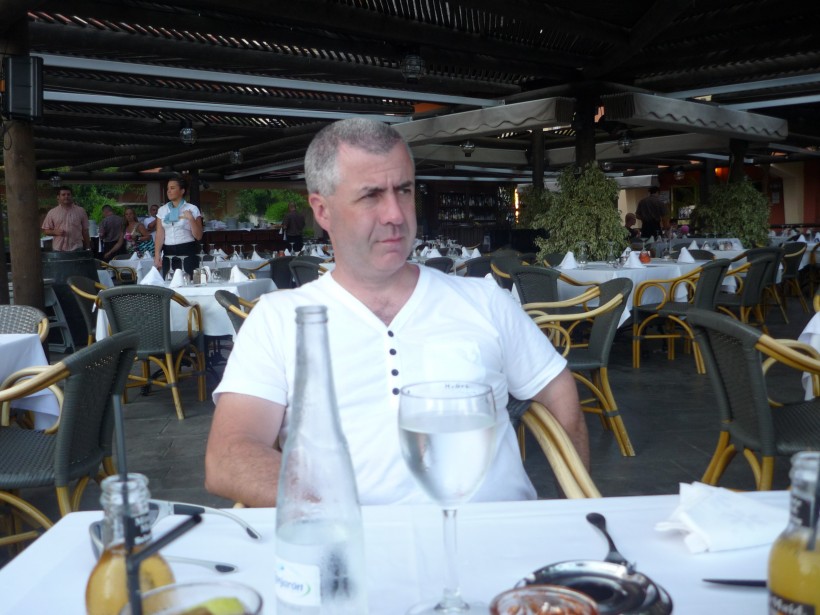In the midst of interviewing ABK Biomedical's new CEO Pat O’Connor on the Halifax company’s direction, I realized that the story I should write was about O’Connor himself.
Last October, the company announced it had raised $1.25 million in funding from the Atlantic Canada Opportunities Agency, Innovacorp and a variety of sources, and co-founder and chief scientific officer Daniel Boyd said, almost parenthetically, that it had also hired a new chief executive from Ireland, a man called Pat O’Connor, a former executive with Boston Scientific Corp., a worldwide developer, manufacturer and marketer of medical devices.
When I finally interviewed him this month, I was astonished by his savvy and industry knowledge as he explained that ABK is at a critical juncture. The company, which is mainly focused on treating uterine fibroids, or benign tumours in a woman’s uterus, is now completing important development testing in preparation for applying for regulatory approval in Europe, the U.S. and/or Canada.
With the support of Springboard Atlantic, an organization that aids commercialization of university research, ABK a few years ago developed OccluRad — tiny bio-compatible glass beads that can treat uterine fibroids. About 40 per cent of women over 35 worldwide develop these tumours, and many require a hysterectomy. Yet radiologists are now tackling this problem in a minimally invasive manner by injecting beads into a target area and essentially blocking the area around the fibroid and starving it of blood.
The problem is that the beads now used in this procedure aren’t visible under fluoroscopy (an imaging technique that uses X-rays to obtain real-time moving images), so the radiologists have to introduce a dye that is visible to confirm that the right blood vessels are blocked.
ABK Biomedical’s innovation is the development of new particles, or to use the clinical term, radiopaque embolic beads, that are visible under fluoroscopy so the dye is no longer needed. That reduces costs, makes the procedure quicker and eliminates the risk of a toxic reaction from the dye.
O’Connor explained that the company now has its corporate structure in place, has lined up manufacturers and partners and is now assessing where it should first seek regulatory approval. The options being assessed are the U.S., Canada and the European Union, or any combination of the three.
The company will begin design verification testing, which includes such things as pre-clinical study, bio-compatibility testing and design verification bench testing, in August, for completion around January 2014.
Preliminary indications reveal the company may be able to receive approval for some applications with rigorous pre-clinical tests rather than full clinical trials. That means regulatory approval in whatever market it chooses first could come in mid-2014.
However, O’Connor added that that does not mean the company won’t proceed with clinical trials later in 2014 — depending on a couple of factors. “Even if you don’t need it (a clinical trial) for regulatory approval, it’s very powerful in gaining market approval,” said O’Connor. Also, patients with uterine fibroids are otherwise healthy and this will drive the requirement for ABK to generate clinical data for regulatory approval in some regions.
What O’Connor was displaying was a knowledge of the medical device development understood by few people — if any — in the Halifax medical device community. For example, when we discussed the continuing research that Boyd and his team was doing at Dalhousie University, and how this could lead to new products, O’Connor explained the challenges of bringing a product from the R&D stage to the market. These include not only safety and efficacy, but the market opportunity, the routes to market, the cost of making the product and what price it could bring in.
The trick, therefore, is not just to develop a device that improves health outcomes and is safe, but also one that can be manufactured and sold with acceptable margins. Any technology selected for development within ABK will be assessed with all those factors in mind.
O’Connor, who has worked for such medical device giants as Boston Scientific and Stryker Orthopaedics, is happy to share his knowledge with others in the medical device community. He hopes to be involved in a biotech mentoring session to be held by Springboard Atlantic and First Angel Network, June 12 and 13, at the Innovacorp Enterprise Centre in Halifax.










